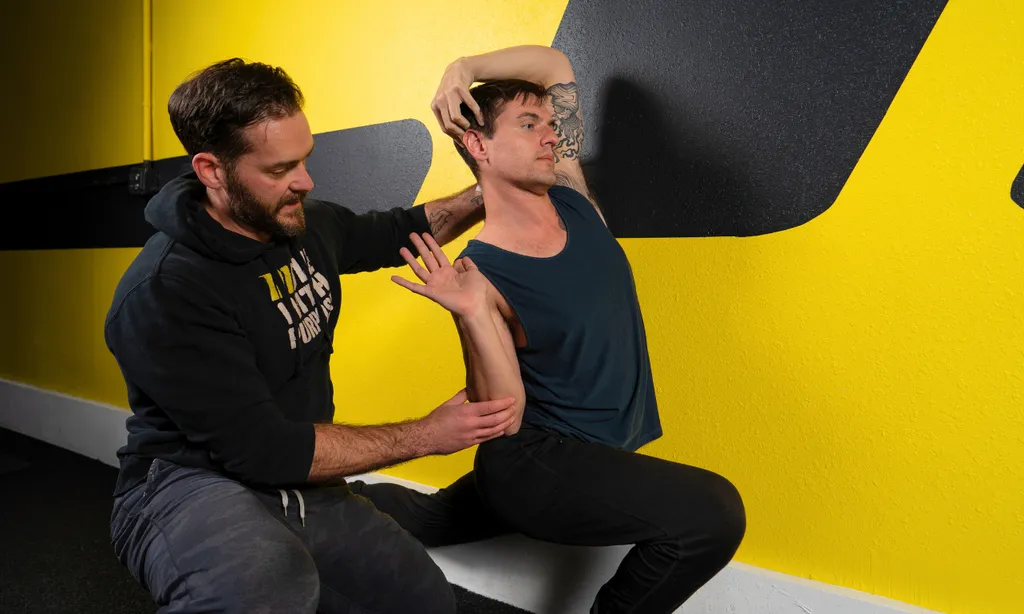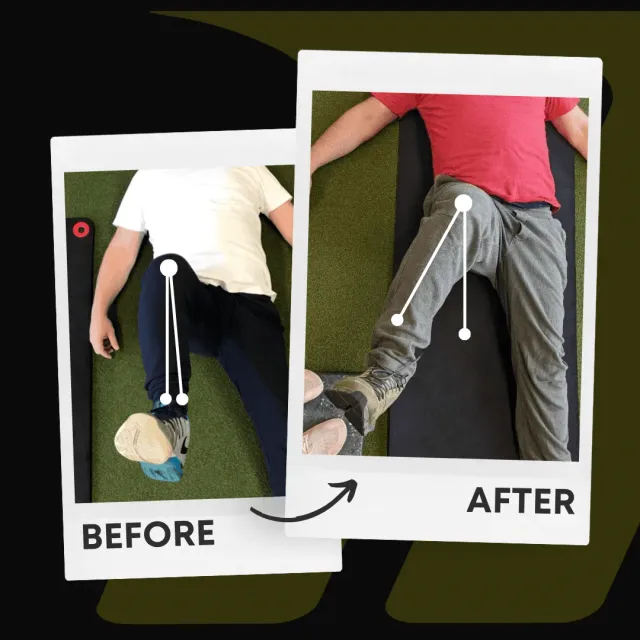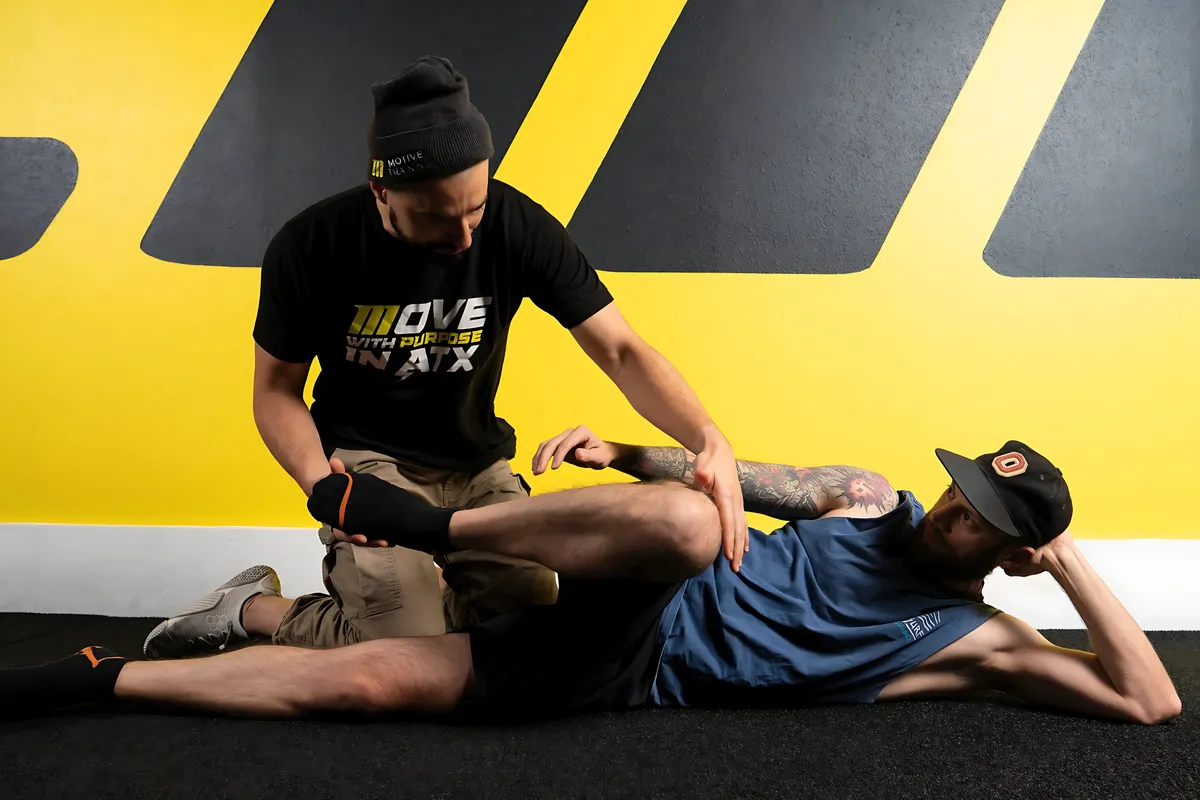Functional Patterns: What It Is And How Motive Training Aligns With Similar Principles
February 2, 2025 | WeckMethod

Functional Patterns has made waves in the fitness industry by focusing on biomechanics, posture, and movement efficiency to address chronic pain and prevent future injuries. While we at Motive Training do not specifically practice Functional Patterns, our methodologies align closely with its principles, as we share the same goal: helping individuals eliminate pain, improve movement quality, and optimize their overall health. We offer a similar yet distinct path toward pain-free, sustainable movement by integrating Functional Range Conditioning (FRC) and WeckMethod into our approach.
What Is Functional Patterns?
Functional Patterns emphasizes biomechanics—how the body moves in coordination with itself—to restore functional movement and alleviate discomfort. Unlike traditional training approaches that isolate muscles, Functional Patterns views the body as an interconnected system. The focus is on enhancing human movement patterns, such as walking, running, and throwing, while addressing the underlying dysfunctions that often lead to chronic pain and injuries.
Key elements of Functional Patterns include:
- Myofascial Release: Techniques aimed at reducing tension in the connective tissues to improve movement efficiency and reduce discomfort.
- Postural Realignment: Exercises designed to restore balance and alignment in the body, which is essential for pain-free movement.
- Gait Analysis: A thorough examination of walking and running mechanics to identify inefficiencies and address imbalances.
- Functional Training: Exercises that replicate real-world movements, emphasizing the coordination of multiple muscle groups and joints to enhance overall function.
The goal of Functional Patterns is to create a body that moves seamlessly, conserves energy, and avoids injury by addressing root dysfunctions instead of merely managing symptoms. This systemic approach has gained a strong following for its effectiveness in helping individuals move and feel better, and importantly, in preventing future injuries.
How Motive Training Aligns With Functional Patterns Principles
At Motive Training, we don’t practice Functional Patterns, but we take a similar approach by prioritizing movement quality, joint health, and personalized assessments. Our foundation lies in integrating Functional Range Conditioning (FRC) and WeckMethod techniques to address many of the same goals. Here’s how we align:
- Holistic Movement Analysis: Like Functional Patterns, we assess how the body moves as a whole. We identify areas where poor biomechanics or joint dysfunction create imbalances.
- Root Cause Approach: Instead of working around pain or dysfunction, we address the root causes by targeting joint health and functional movement.
- Focus on Human Biomechanics: Our training emphasizes movement efficiency and coordination to improve posture, gait, and overall performance.
- Joint-Centric Training: We believe that healthy joints are the foundation of effective, pain-free movement—a concept central to both our methodology and Functional Patterns.
Functional Range Conditioning: The Backbone of Our Approach
FRC forms the core of our programming, providing a science-based system to assess, improve, and sustain joint health. Unlike traditional strength training methods that focus primarily on external movements, FRC prioritizes the internal environment of the body—specifically joint workspace. Here’s how we implement FRC to improve movement quality and reduce pain:
- Functional Range Assessment (FRA): We begin with a detailed assessment of each client’s joint mobility. We pinpoint areas requiring targeted intervention by identifying where active range of motion falls short of passive range.
- Controlled Articular Rotations (CARs): These joint-specific movements maintain and expand range of motion while improving neuromuscular control. CARs help clients build a foundation for pain-free movement and improved biomechanics.
- End-Range Training: Techniques like Progressive Angular Isometric Loading (PAILs) and Regressive Angular Isometric Loading (RAILs) target connective tissues and strengthen joints in their most vulnerable positions. This prevents injuries and enhances joint resilience.
- Addressing Dysfunction: Many clients arrive with symptoms of chronic pain, such as lower back pain or shoulder stiffness. FRC’s tissue-specific approach resolves these dysfunctions at the root, improving overall mobility and reducing compensatory patterns.
WeckMethod: Enhancing Dynamic Movement
To complement our FRC practices, we incorporate WeckMethod principles to enhance rotational power, balance, and core integration. WeckMethod is all about dynamic stability, helping clients move efficiently and confidently during activities like walking, running, or lifting. This approach integrates seamlessly with our mission to create sustainable movement patterns, and it’s an exciting addition to our training.
Here’s how WeckMethod supports our goals:
- Rotational Training: We help clients build rotational strength and stability by focusing on multi-directional movements. This is crucial for activities involving twisting, throwing, or even everyday movements like turning to pick up an object.
- Coiling Core Training: A hallmark of WeckMethod, coiling trains the body to generate power through rotational movements. This technique targets the obliques, lats, and other core muscles, creating a strong and integrated midsection.
- Gait Optimization: We use exercises that mimic natural gait mechanics to improve walking efficiency and reduce energy leaks. This is particularly beneficial for recovering from injuries or chronic pain.
- Core Stability and Coordination: Tools like the RMT Rope or BOSU Ball train the core to stabilize and transfer energy effectively, improving posture and overall movement quality.
The Motive Training Difference
While Functional Patterns and its practitioners have gained recognition for their innovative methods, Motive Training offers a unique approach tailored to the individual. Our philosophy is built around the belief that improving joint health and movement quality can profoundly impact every aspect of life. Here are some of the key benefits clients experience when training with us:
- Eliminating Pain at Its Source: Chronic pain often stems from dysfunctional movement or restricted joint mobility. By addressing these issues directly, we help clients move pain-free without relying on short-term fixes.
- Preventing Future Injuries: Weak or restricted joints are often the starting point for compensatory patterns that lead to injuries. Strengthening and mobilizing joints through FRC reduces this risk, enabling clients to move with confidence.
- Enhancing Athletic Performance: Whether you’re a runner, cyclist, or recreational athlete, improved biomechanics and joint health translate to better performance and reduced energy expenditure.
- Improving Posture and Gait: Poor posture often results from compensations due to joint dysfunction or muscular imbalances. Our integrated approach restores alignment and efficiency.
- Building Confidence in Movement: Addressing the root causes of dysfunction eliminates pain and empowers clients to move freely and fearlessly, knowing their bodies can handle the demands of daily life.
A Typical Journey at Motive Training
When clients join Motive Training, their journey begins with a thorough assessment. We evaluate their biomechanics, identify limitations, and create a personalized plan combining FRC, WeckMethod, and other movement strategies. Over the course of a few months, clients typically notice:
- Reduced discomfort in problem areas like the lower back, shoulders, or hips.
- Improved range of motion and joint control.
- Better coordination and balance in everyday tasks.
- Enhanced power and efficiency in rotational and linear movements.
- A renewed sense of confidence in their ability to move without pain.
Functional Patterns vs. Our Approach
While we share overlapping goals with Functional Patterns, Motive Training’s integration of FRC and WeckMethod offers a distinct perspective. Functional Patterns leans heavily on myofascial work and systemic realignment, whereas our focus is rooted in joint-specific training and dynamic movement enhancement. Our combination of cutting-edge science and practical application ensures that clients not only eliminate pain but also build the strength and resilience needed for long-term success.
Why It All Matters
Movement is life. At Motive Training, we believe that optimizing how your body moves can unlock your potential to live pain-free, perform better, and enjoy a higher quality of life. While we don’t practice Functional Patterns, our methods align in their commitment to addressing dysfunction and promoting sustainable, efficient movement. By integrating FRC and WeckMethod, we offer a comprehensive solution tailored to your unique needs and goals.
If you’re ready to transform the way your body moves, contact us today to schedule your assessment. Together, we’ll create a program that puts you on the path to pain-free, confident movement—for life.
Written by:
 Brian Murray, FRA, FRSC
Brian Murray, FRA, FRSC
Founder of Motive Training
We’ll teach you both how to move with purpose so you can lead a healthy, strong, and pain-free life. Our headquarters are in Austin, TX, but you can work with us online by signing up for KINSTRETCH Online or digging deep into one of our Motive Mobility Blueprints.

